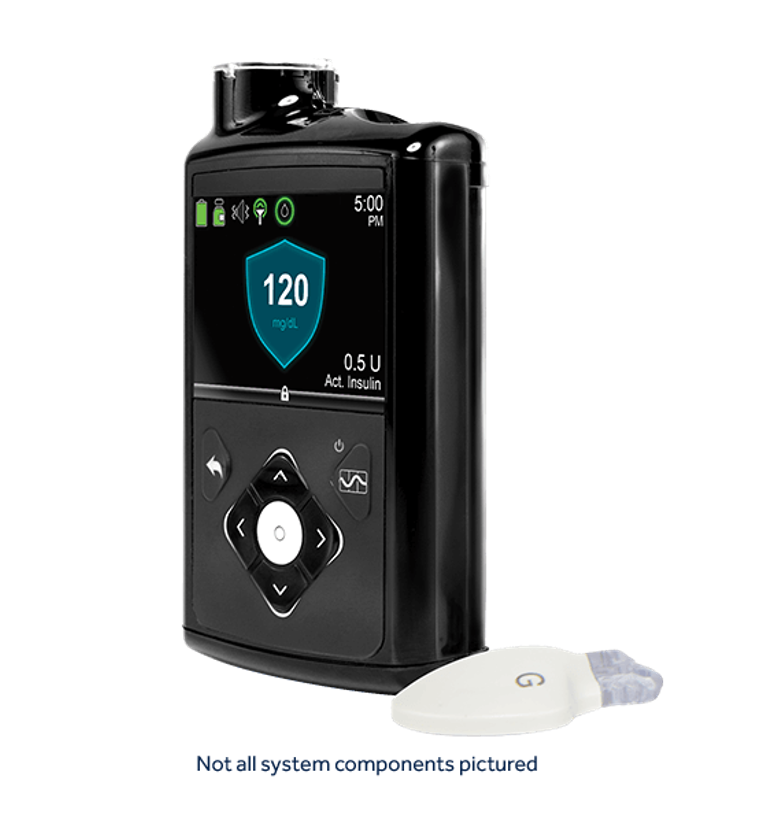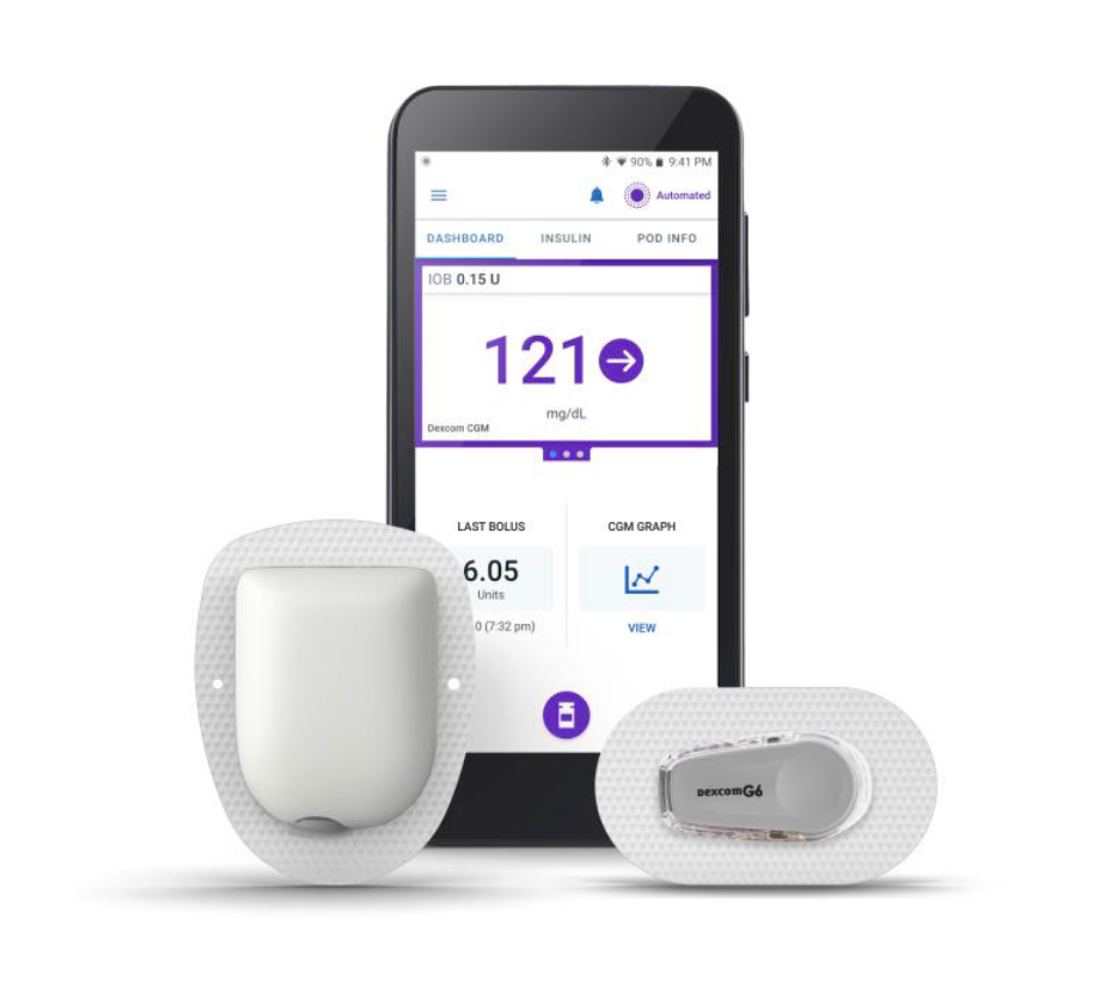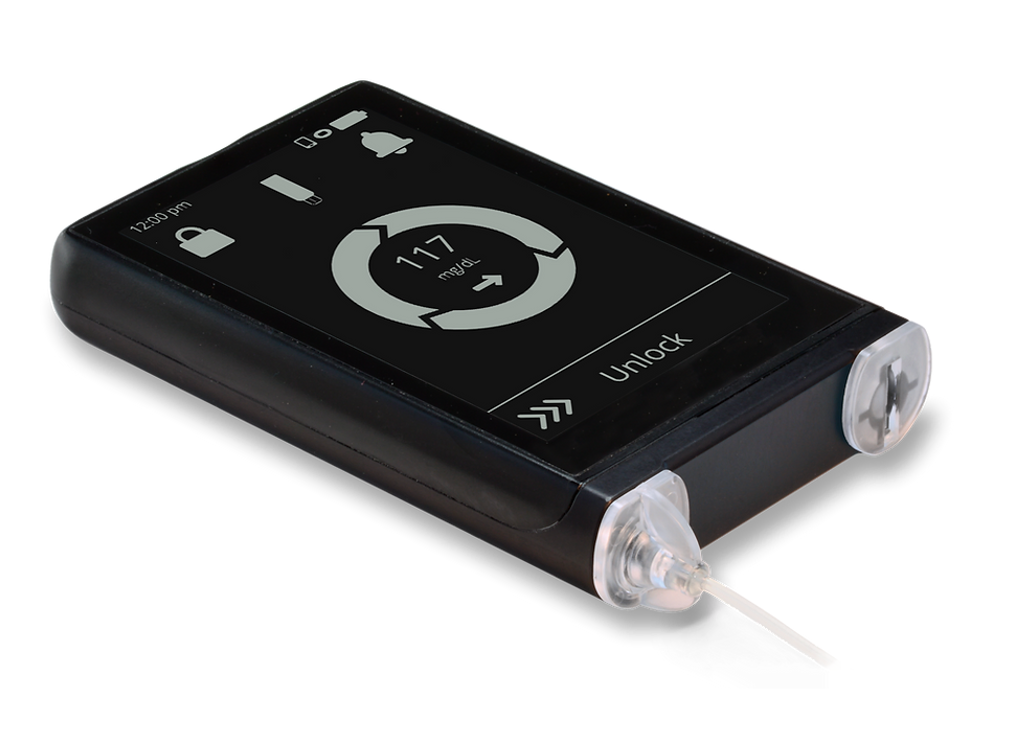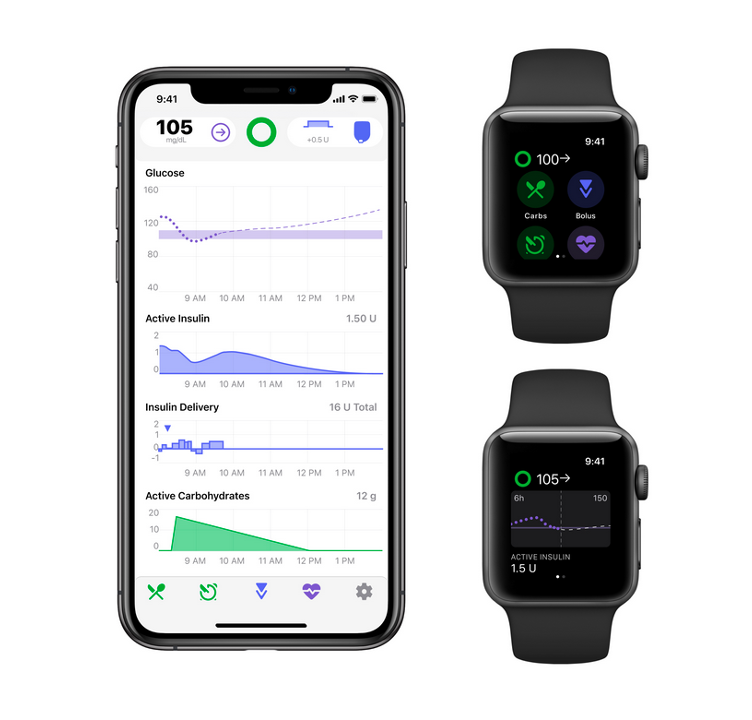Tech on the Horizon: Where Will Automated Insulin Delivery (AID) be in 2021?
 By Albert Cai
By Albert Cai
What AID systems are currently available, what can we expect in the next year, and where is AID technology headed?
Editor's note: This piece was updated on January 11, 2021.
Want more information just like this?
As we enter 2021, we’re taking a look at what’s ahead for automated insulin delivery (AID) systems. Because the COVID-19 pandemic delayed many clinical trials and FDA reviews in 2020, several companies are expecting to launch new AID systems in 2021. This list covers many of the most notable upcoming products, but there are likely others on the horizon – if you know of a system you think we should track, please let us know.
Click to jump to a product, organized by expected launch date. You’ll find detailed descriptions and possible launch timelines for each, reflecting US availability.
What is automated insulin delivery (AID)?
Automated insulin delivery has many names – artificial pancreas, hybrid closed loop, bionic pancreas, predictive low-glucose suspend – but all share the same goal: combining continuous glucose monitors (CGMs) with smart algorithms to automatically adjust insulin delivery via an insulin pump. AID systems aim to reduce or eliminate hypoglycemia, improve Time in Range, and reduce hyperglycemia – especially postmeal and overnight.
When thinking about the development of AID technology, it’s often helpful to think in stages.
-
Stage 1: The most basic AID system might shut off the insulin pump whenever the user’s CGM readings drop below a certain number, such as 70 mg/dl, to reduce time spent in hypoglycemia and help prevent severe hypoglycemia.
-
Stage 2: The AID system could predict when glucose is going to go low and automatically reduce or stop insulin delivery to further help prevent hypoglycemia.
-
Stage 3: The AID system may be able to automatically adjust basal insulin delivery depending on whether the user’s glucose is trending up or down, and taking into account other factors, such as insulin on board. This adjustment of basal insulin would aim to increase Time in Range (TIR), and help prevent both high and low glucose levels. At this stage, the user would still have to manually give meal boluses and correction boluses.
-
Stage 4: The AID system will be able to deliver correction boluses when glucose values are high. These small adjustment boluses would be a further step in improving TIR, with less time with hyperglycemia.
-
Stage 5: The systems will be able to detect meals and automatically deliver a system-calculated meal bolus to reduce postmeal high blood glucose levels. With the elimination of manual meal bolusing, the system is considered to be a “fully closed loop” System.
Currently available products are in stages 3-4. By the end of 2021, we may have multiple stage 4 systems available.
Medtronic MiniMed 670G and 770G – already available

Now available for people over the age of two.
What is it? Medtronic’s MiniMed 670G has been available since spring 2017 and was the first stage 3 AID system to be cleared by the FDA. Prior to the 670G, Medtronic released stage 1 and stage 2 systems (Medtronic MiniMed 530Gand 630G, respectively). More recently, the MiniMed 770G system was cleared in the US in September 2020. Both the MiniMed 670G and 770G systems use the same insulin adjustment algorithm, which adjusts basal insulin delivery every five minutes based on CGM readings, targeting 120 mg/dl. The target glucose level can be temporarily raised to 150 mg/dl when low blood sugar (is a concern, such as during exercise or sleepovers for children. Both systems come with Medtronic’s Guardian Sensor 3 CGM, which has seven-day wear and requires two fingerstick calibrations per day (although four are recommended). See our article from 2016 for a full breakdown on the MiniMed 670G and from September for more on the 770G.
What’s the difference between the MiniMed 670G and 770G? As mentioned, both the MiniMed 670G and 770G systems use the same insulin adjustment algorithm and the same CGM. However, the newer MiniMed 770G has an improved pump: the 770G pump includes Bluetooth connectivity and can be paired to the MiniMed Mobile smartphone app (available for the iOS and Android) for users to view their CGM and pump information without pulling out their pumps. The app also allows users to share their data with others in real-time. Note: users can only view information but cannot control the pump (e.g., deliver a bolus, adjust basal rates) from the app. Bluetooth connectivity also means the system’s insulin adjustment algorithm can be updated. Medtronic has promised current MiniMed 770G users a free upgrade to the MiniMed 780G when that system becomes available (more below). Finally, the MiniMed 670G is only cleared in the US for people over the age of seven, while the MiniMed 770G is cleared for people over the age of two.
Medtronic management recently shared that algorithms will become an increasingly important part of the diabetes ecosystem, and presumably, a key differentiator for companies – lots of exciting times ahead with AID, that is for certain.
Tandem Control-IQ – already available in US

Now available for people six years and older.
What is it? The Control-IQ system from Tandem was cleared by the FDA at the end of 2019 and launched to customers in January 2020. It’s precursor – Basal-IQ – was cleared in 2018. The Control-IQ system uses Tandem’s t:slim X2 pump, Dexcom’s G6 CGM which requires no fingerstick calibrations, and the Control-IQ insulin adjustment algorithm. In addition to automatic basal rate adjustments and predictive insulin suspension, the Control-IQ system is the only AID system with automatic correction boluses: when it predicts glucose to be above 180 mg/dL in 30 minutes, the system will deliver 60% of the correction bolus needed to reach a target of 110 mg/dL. Control-IQ targets glucose values between 112.5 and 160 mg/dL, though users can turn on or schedule “Sleep Activity” mode to achieve 112.5-120 mg/dL by the morning. This past summer, Tandem launched the t:connect smartphone app (for iOS and Android), which allows users to check their pump and CGM data on their phones.
What’s next? With the current t:connect smartphone app, users can view information but cannot control the pump (e.g., deliver a bolus, adjust basal rates). Tandem has already submitted an updated app with pump control to the FDA and expects to launch that functionality in 2021. Tandem has also mentioned enhancements to the Control-IQ algorithm that are expected in 2021. While we haven’t heard many specifics, we believe it’s likely that these enhancements will focus on improving glycemic outcomes, personalization, and usability of the system.
Insulet Omnipod 5 – expected early-to-mid-2021

FDA submission is likely coming soon (if it hasn’t occurred already), and Insulet aims for a “limited” launch in early-to-mid 2021. Insulet has completed the clinical trial for Omnipod 5 but has not shared the results.
What’s new? Omnipod 5 is Insulet’s AID for its popular Omnipod disposable pumps, also called patch pumps. If you’ve been following the field, you’ll know that Insulet previously called the new system Horizon – same system, new name. Omnipod 5 uses Dexcom’s G6 CGM, and Insulet expects to launch the system with smartphone control capability; users can still opt for a dedicated controller device, since smartphone control will be available for Android users first. Insulet is working on an iPhone version for Omnipod 5, though that will not be available at launch. Insulet is also working with Tidepool (more below) on an iPhone-based AID system. Omnipod 5 will have adjustable targets between 100 to 150 mg/dl. Because the Omnipod pump will store the algorithm and communicate directly with Dexcom G6, the system will work even without the smartphone or pump controller nearby.
Medtronic MiniMed 780G – expected mid-2021

Pivotal trial completed for 780G and presented at ADA 2020. Medtronic aims to submit the system to the FDA by January 2021 with launch coming around mid-2021 for adults (either ages 14+ or 18+).
What’s new? The MiniMed 780G will be Medtronic’s second AID algorithm and a significant upgrade over the MiniMed 670G and 770G systems. In addition to automatic basal rate adjustments, the MiniMed 780G will include automatic correction boluses and an adjustable glucose target down to 100 mg/dl. The system will also have fewer alarms and simpler operation with the goal of further increasing Time in Range. The MiniMed 770G and MiniMed 780G pumps are identical, meaning MiniMed 780G users will also be able to use the MiniMed Mobile smartphone app for viewing pump data, uploading pump data wirelessly, and updating their pump wirelessly. As the pumps are identical, Medtronic has promised that those who purchase the MiniMed 770G now will be able to wirelessly upgrade to the MiniMed 780G for free when 780G does become available. Finally, the MiniMed 780G will use the same Guardian Sensor 3 CGM as the 670G and 770G, which requires two fingerstick calibrations per day and has a seven-day wear time. As a sidenote, an improved CGM sensor is in development by Medtronic, but isn’t expected to be available when MiniMed 780G launches.
The MiniMed 780G is already available in at least a dozen countries in Europe – we learned this week of multiple MiniMed 780G launches that have gone well. Data from a clinical trial was presented at the ADA 2020 conference. On average, the 157 participants in the study (ages 14-75) saw their Time in Range improve by 1.4 hours per day (69% to 75%) while using the system – that’s particularly notable given the low baseline of the A1C. Speaking of A1C, the A1C improved by 0.5% (7.5% to 7%) after using the system.
Beta Bionics insulin-only iLet – expected mid-to-late-2021

Pivotal trial underway with completion expected in the first half of 2021. Launch expected mid-to-late-2021, though this is subject to change.
What’s new? Beta Bionics is a Massachusetts-based startup developing an AID pump and algorithm called iLet. iLet will work with Dexcom and Senseonics’ CGMs (and possibly others in the future) and is designed to be especially user-friendly. diaTribe founder Kelly Close participated in an early Beta Bionics trial (2013!) and raved about the system and how easy the pump seems. At set up, users only need to enter body weight (no insulin-to-carb ratio, sensitivity factor, basal rates, etc.), and the system will learn more over time. To bolus, users will use icons to describe meals as containing more, less, or the same amount of carbs as usual (no carb counting). The insulin-only clinical trial for iLet began in the summer of 2020 and is expected to wrap up in the first half of 2021. Beta Bionics aims to launch iLet mid-to-late-2021, though this could be delayed as the FDA continues to prioritize COVID-19-related devices.
What’s next? Beta Bionics’ iLet is unique from the other pumps on this list, because it is designed to work in either insulin-only or insulin-and-glucagon configurations. With glucagon, Beta Bionics believes the system can reduce hypoglycemia while maintaining stable glucose levels and potentially even better-than-average, lower glucose levels due to availability of glucagon. Currently, there are different views on using glucagon in an AID system – in addition to the potential for improved glycemic management, there are uncertainties around glucagon pricing and availability. Regardless, the insulin-and-glucagon version of iLet is still a few years away.
Tidepool Loop – launch timing unclear
 Online observational study completed, and launch timeline depends on FDA progress.
Online observational study completed, and launch timeline depends on FDA progress.
What’s new? Unlike the others in this list, Tidepool is a non-profit and is working on the AID algorithm only; Tidepool does not have its own insulin pump or its own pump and CGM combination (like Medtronic). About two years ago, Tidepool announced plans to submit the do-it-yourself (DIY) Loop app to the FDA to become an officially supported app available on the Apple App Store, compatible with in-warranty, commercially available pumps and CGMs. For now, DIY Loop is a free, publicly available, open-source, non-FDA-approved AID system that works with Dexcom and Medtronic CGMs and old Medtronic and Insulet pumps. Read about Adam Brown’s experience using DIY Loop here. For those who are very interested in the project, there is a great deal to learn from notes that Tidepool shares about its communications with FDA – the latest notes are from a mid-2020 meeting.
Initially, Tidepool plans to launch with Insulet Omnipod and Dexcom G6 compatibility. To set it apart from the DIY-version, Tidepool Loop will have different colors, guardrails around certain settings, and a built-in tutorial for new users. A 12-month, completely virtual study was performed with Loop users and will support Tidepool’s submission of Loop to the FDA. The six-month data was presented at ATTD 2020 showing a Time in Range increase of about 1.4 hours per day (67% to 73%) with Loop. Tidepool also announced in November, 2020 that its human factors study had also been completed – this is another required step of the FDA submission. Much of what Tidepool is doing is unprecedented, so the launch timing is unclear. In an update on January 8th, Tidepool shared that it has now completed FDA submission of Loop.







